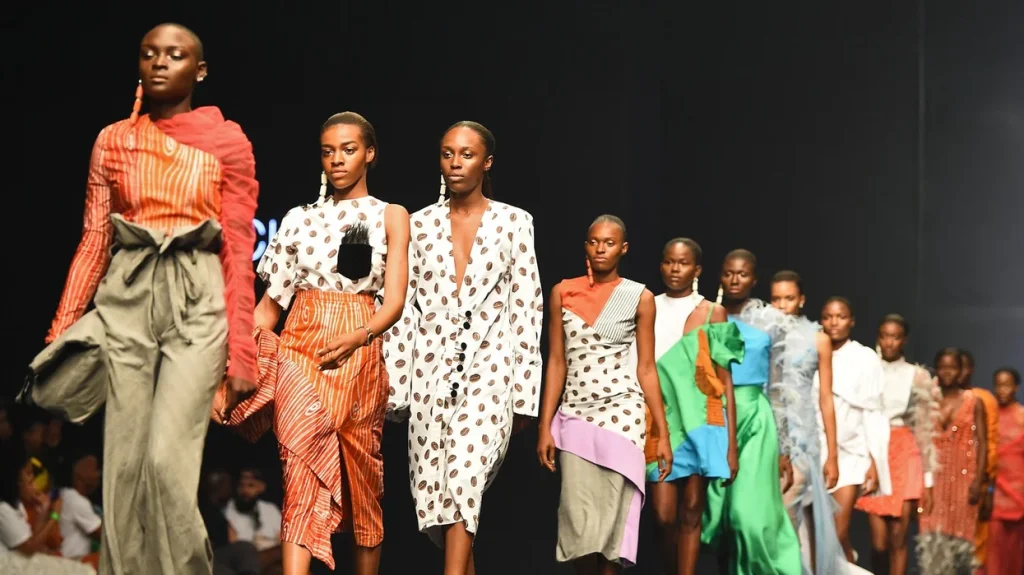In recent years, the global fashion industry has witnessed a remarkable transformation, with Nigerian designers emerging as influential players. Their unique blend of traditional aesthetics and contemporary styles has not only captivated local audiences but has also garnered international acclaim. This blog post delves into the rise of Nigerian designers on the global stage, exploring their innovative approaches, cultural inspirations, and the factors contributing to their success## The Cultural Heritage Behind Nigerian Fashion
Nigerian fashion is deeply rooted in a rich tapestry of cultural heritage. The diverse ethnic groups in Nigeria—such as the Yoruba, Igbo, and Hausa—each contribute distinct elements to the fashion landscape. Traditional fabrics like Ankara, Aso Oke, and Batik serve as canvases for creativity, allowing designers to express narratives that reflect their heritage.
Nigerian designers often incorporate vibrant colors, intricate patterns, and storytelling elements into their creations. These features not only celebrate Nigerian culture but also resonate with global audiences authenticity and originality in their fashion choices. Brands like Tsemaye Binitie and Ziva Lagos have mastered the art of merging traditional techniques with modern silhouettes, making their pieces both timeless and trendy.
Table of Contents


Innovative Designs and Sustainability
A significant aspect of the rise of Nigerian designers is their commitment to innovation and sustainability. Designers like Ibidun Allison, Lisa Folawiyo, and Tolu Bally have taken the fashion world by storm with their inventive approaches to design. They skillfully combine traditional craftsmanship with modern techniques, resulting in pieces that are not only visually stunning but also ethically produced.
Furthermore, many Nigerian designers are increasingly focusing on sustainable practices by sourcing materials locally and promoting fair trade. This commitment to sustainability is appealing to conscious consumers who are looking for fashion that aligns with their values. For instance, brands like Ella & Gabby emphasize eco-friendly production methods while creating stylish, one-of-a-kind pieces.
International Collaborations and Recognition
Nigerian designers have actively sought to collaborate with global brands and influencers, further solidifying their place on the international stage. High-profile partnerships and participation in global fashion weeks have propelled designers like Kenneth Ize and Maki Oh into the limelight. Their unique perspectives and authenticity have allowed them to stand out in a crowded market, bringing Nigerian fashion to the forefront of global trends.
Participation in prestigious events such as New York Fashion Week and London Fashion Week provided Nigerian designers with a platform to showcase their work to a diverse audience. These opportunities have not only led to increased visibility but have also opened doors for collaborations with international retailers and celebrities. For instance, Seyi Shay, a notable Nigerian musician, has been spotted wearing designs from local brands, further promoting their international appeal.
The Impact of Social Media


In today’s digital age, social media plays a crucial role in promoting fashion brands. Platforms like Instagram and TikTok have become essential tools for Nigerian designers to reach global audiences. With visually-driven content, designers are able to showcase their collections, share behind-the-scenes processes, and engage directly with customers.
The rise of influencers and fashion bloggers, particularly from Nigeria, has also contributed to the global recognition of Nigerian fashion. They have leveraged their platforms to highlight local designers, thus creating a ripple effect that has attracted international attention. Influencers such as Temi Otedola and Kika Osunde have championed Nigerian brands, further solidifying their status on the global stage.
Challenges and Opportunities
Despite their successes, Nigerian designers face several challenges, including limited access to funding, the high cost of raw materials, and infrastructural issues. However, these challenges are also presenting opportunities for growth. The increasing interest in African fashion has led to the establishment of various initiatives aimed at supporting local designers, such as the Fashion Focus Fund.
Moreover, the growing diaspora community has created a demand for Nigerian-inspired fashion, enabling designers to tap into newmarkets. This rising demand not only provides financial opportunities but also encourages innovation and diversity in design.
Building an Inclusive Fashion Community
The rise of Nigerian designers on the global stage is also fostering a sense of community and inclusivity. Many designers are collaborating not only with each other but also with artisans and craftsmen from various backgrounds, bridging the gap between traditional craftsmanship and contemporary fashion. This collaborative spirit has led to the creation of unique pieces that celebrate diversity, showcasing the rich cultural heritage of Nigeria while appealing to a broad audience.
Initiatives like the African Fashion Foundation and the Fashion Business Accelerator are crucial in nurturing emerging talent and providing resources for designers to develop their. These platforms encourage mentorship and collaboration, helping to build a sustainable fashion ecosystem in Nigeria.
The Future of Nigerian Fashion
As Nigerian designers continue to gain recognition, the future of Nigerian fashion looks promising. With a strong emphasis on cultural identity, sustainability, and innovation, they are poised to reshape the global fashion landscape. The increasing interest from international retailers and fashion houses indicates a significant shift towards appreciating African aesthetics and craftsmanship.
Moreover, the next generation of designers is set to push boundaries even further. With a blend of technology and fashion, we can expect to see innovative designs that challenge traditional norms and appeal to a global audience. Emerging trends such as digital fashion and virtual reality showcases may soon become part of the Nigerian fashion narrative, enhancing its visibility on the world stage.
Conclusion
The rise of Nigerian designers on the global stage a testament to the power of creativity, cultural heritage, and resilience. By merging traditional techniques with modern sensibilities, these designers are crafting a unique identity that resonates with a global audience. Their commitment to sustainability and collaboration is paving the way for a more inclusive and diverse fashion industry.
As they continue to gain recognition and influence, Nigerian designers are just contributing to the fashion world but are also inspiring a movement that celebrates culture, creativity, and. With each collection, they remind us of the beauty of diversity the importance of storytelling in fashion, proving that the future is indeed fashion forward.
Key Takeaways:
- Nigerian designers are gaining global recognition due to their unique cultural heritage and innovative designs.
- The commitment to sustainability and ethical practices is a defining feature of many Nigerian fashion brands.
- Social media plays a crucial role in promoting Nigerian fashion and connecting designers with international markets.
- Collaborative efforts and initiatives are vital for nurturing talent and creating a sustainable fashion ecosystem in Nigeria.
- The future of Nigerian fashion is bright, with new trends and technologies set to enhance its global presence.
This post emphasizes the remarkable journey of Nigerian designers as they carve out a niche for themselves on the global fashion stage. With a focus on roots, innovation, and community the rise of Nigerian fashion is a narrative worth following.



















